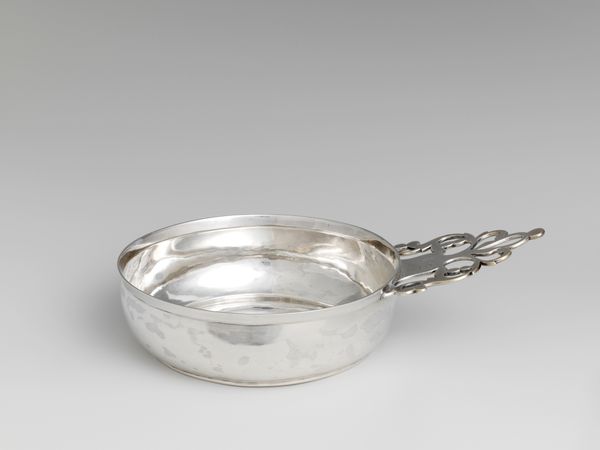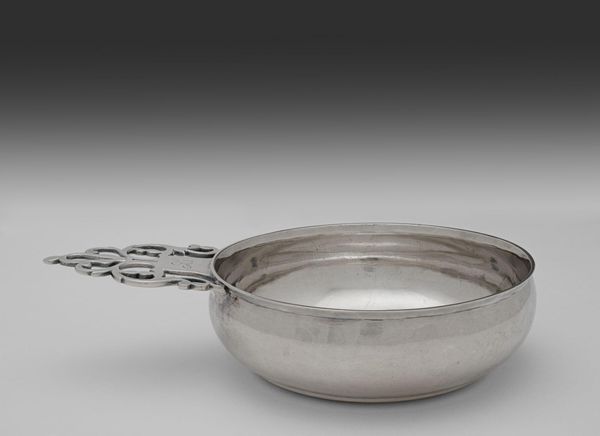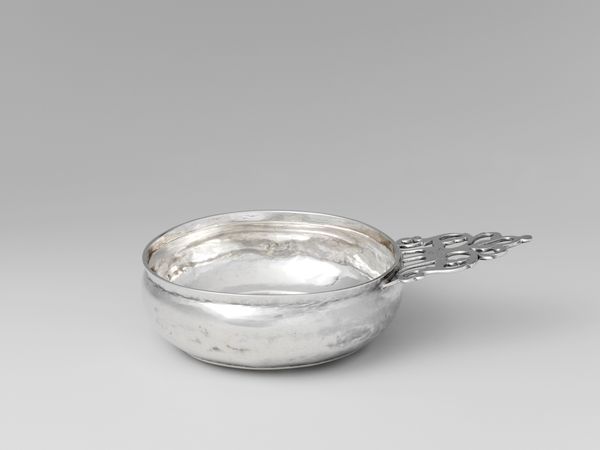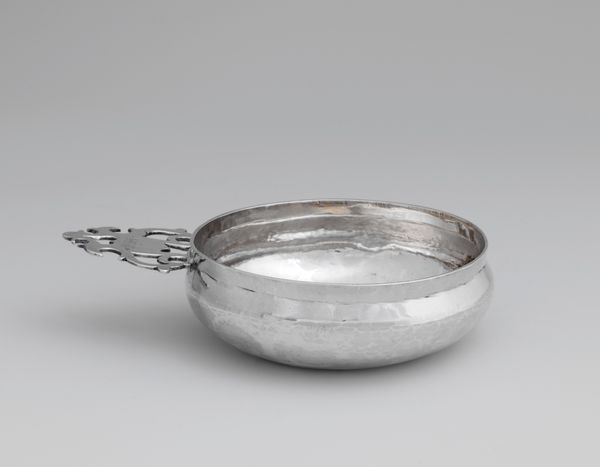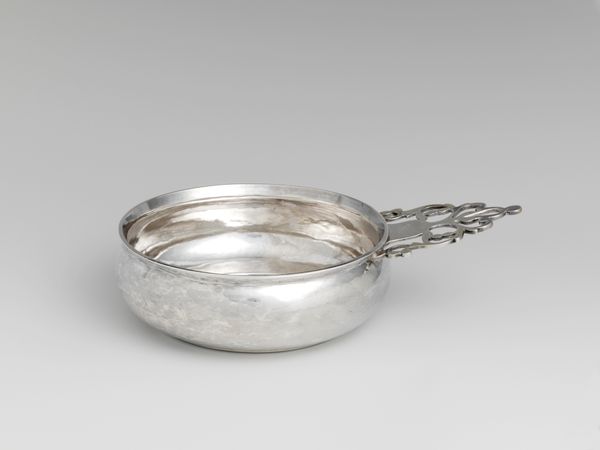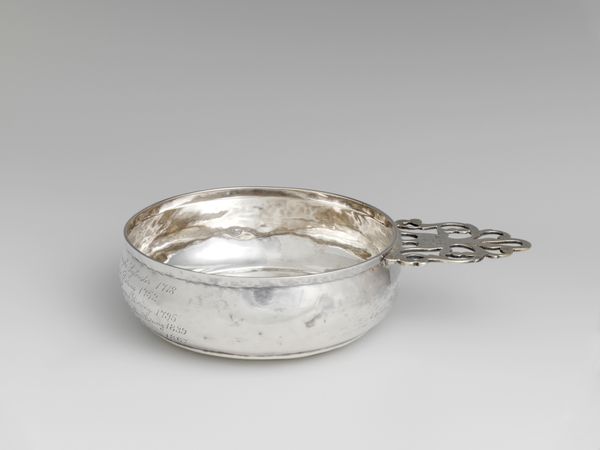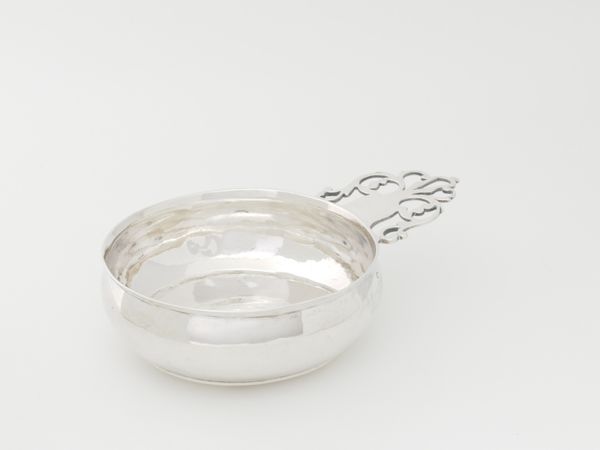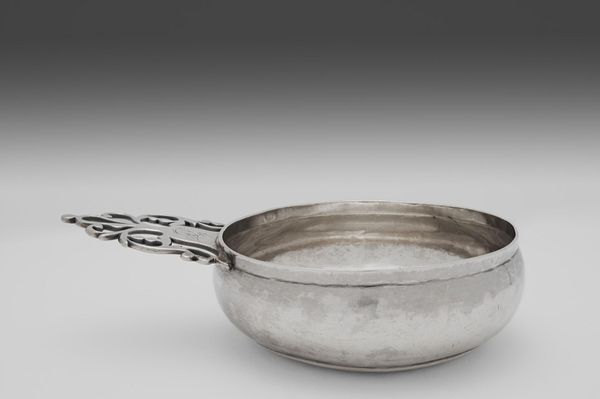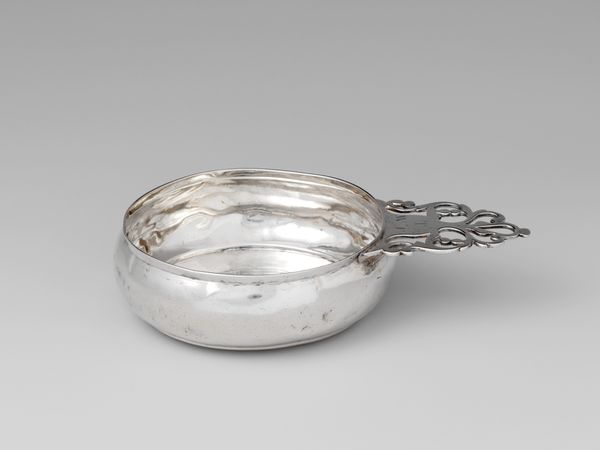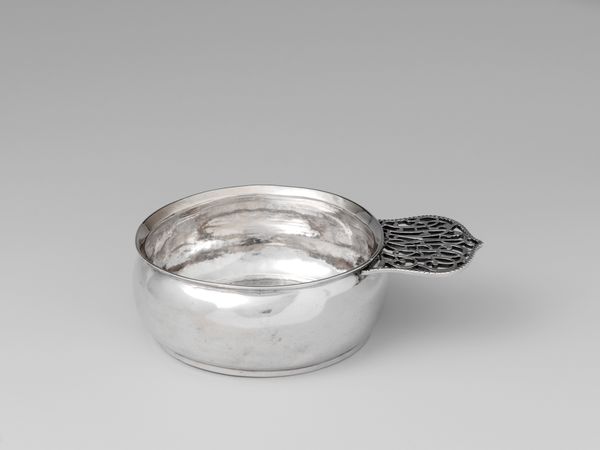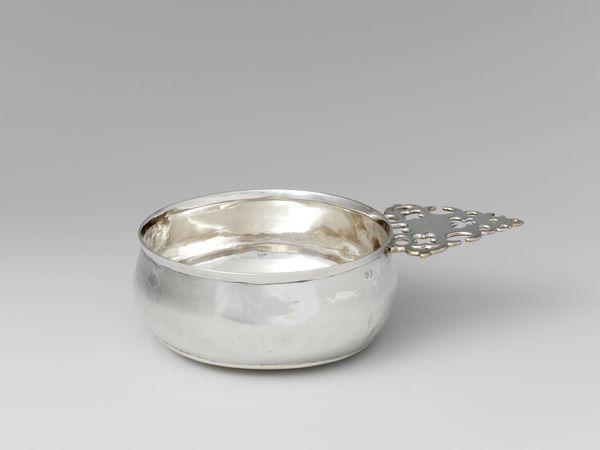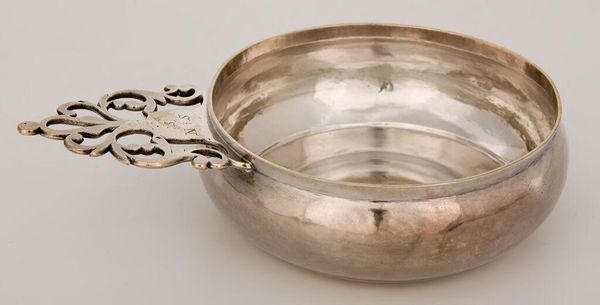
silver, metal
#
silver
#
metal
#
vessel
#
england
#
decorative-art
Dimensions: 5.1 × 21.3 × 14 cm (2 × 8 3/8 × 5 1/2 in.)
Copyright: Public Domain
Curator: What strikes me immediately about this object is the way the light interacts with the silver surface. It's incredibly reflective, giving a sense of almost ethereal lightness. Editor: Well, let's provide some context. This is an English silver porringer, estimated to have been crafted between 1750 and 1775. Currently, it resides here at the Art Institute of Chicago. Curator: "Porringer"—so, more than just a bowl. What would it have signified in its original context? Editor: Indeed. In 18th-century England, such silver objects indicated a certain level of affluence and were often used within family rituals. Porringers, specifically, were frequently associated with childhood, used for feeding infants or invalids. The decorative handle becomes a status symbol. Curator: The handle! Precisely! Look at its curvilinear design. The artisan clearly cared deeply about the bowl's visual appeal and about introducing flourishes to the user’s haptic experience, turning function into subtle spectacle. It beautifully complicates the bowl's otherwise simple, rounded form. Editor: Yet, let's not forget the material. Silver was a powerful signifier. Its value meant it was often melted down and reworked as fashions changed. Its survival is, in a sense, a testament to its owner's enduring attachment and socio-economic positioning. This very object has, I speculate, borne witness to some quite extraordinary historical changes. Curator: And to the way artistic styles adapt to technological advances. Note how this silversmith balances form and function, employing traditional techniques. Each careful dent hints at labor. But also evokes an interesting haptic feeling. Editor: Ultimately, this porringer provides a microcosm of 18th-century life—domestic rituals, social hierarchies, and artistic expression. Curator: Agreed, and from my perspective, seeing how an object balances visual appeal with utility provides clues as to the craftsman's ingenuity. Editor: I believe appreciating this piece comes from realizing its integral place in a broader history, in cultural patterns as objects gain new purpose.
Comments
No comments
Be the first to comment and join the conversation on the ultimate creative platform.
